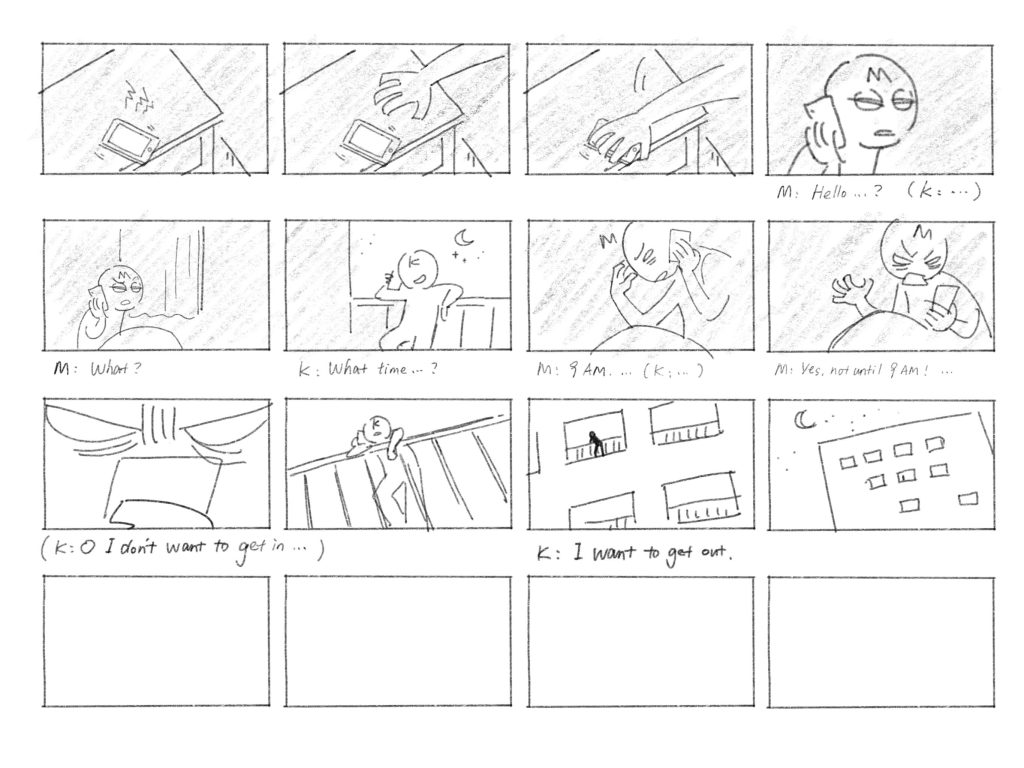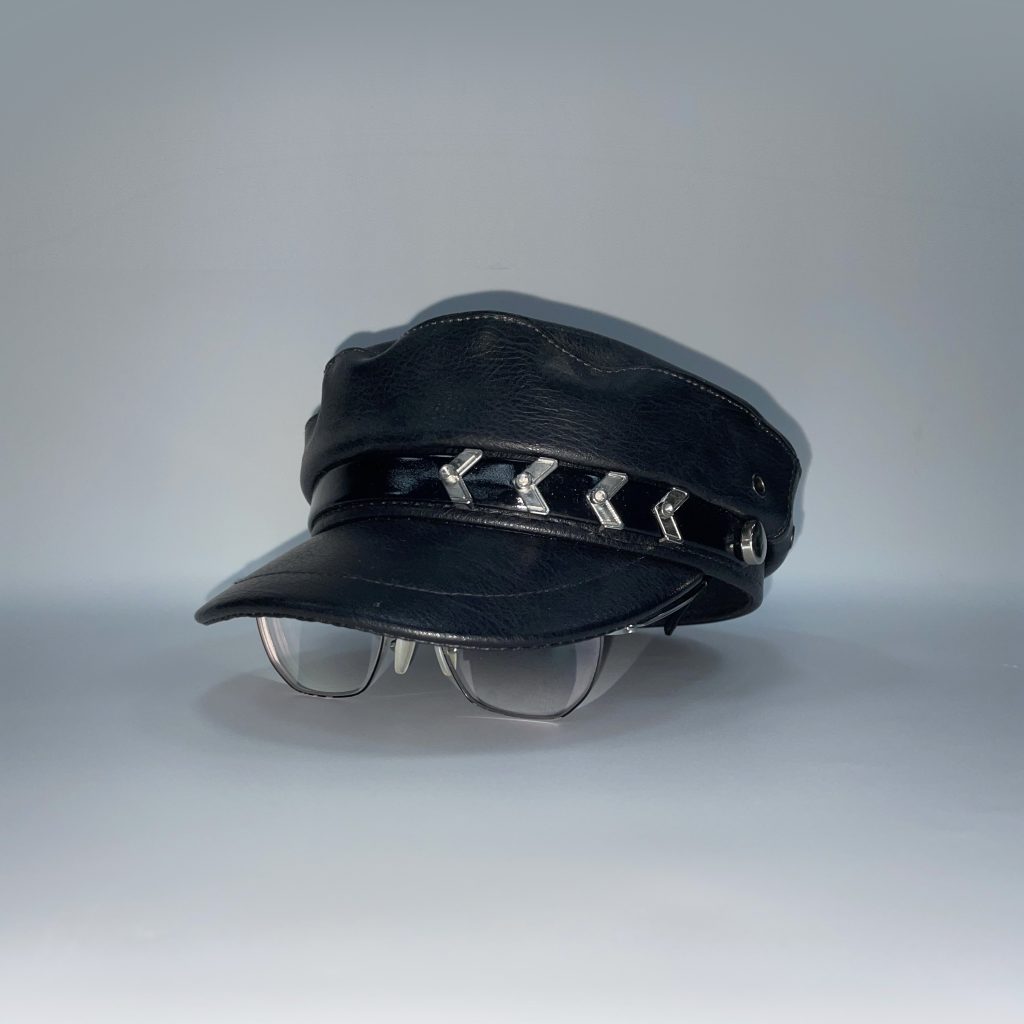NOTES
MISSION STATEMENT
Mission statement is the theme of the story. It is why you make this film, and what you want to leave the audience with.
Usually, we divide a big topic into small points for a film story. Take the animation anthology series Love, Death & Robots as an example. Nearly every episode talks about death — an eternal topic of literature and art. But each of them picks up a different small point to develop. “Three Robots” is about the extinction of the human race, “The Witness” is about a cycle of misunderstanding and murder, “Zima Blue” is about eternity and return to nothingness, and in “Jibaro” it is greed that leads to death.

STORY FLOW
A short story needs:
- 1 or 2 characters
- limited location
- a situation(problem)
- conflict
- an ending
It will present a timeline like this:
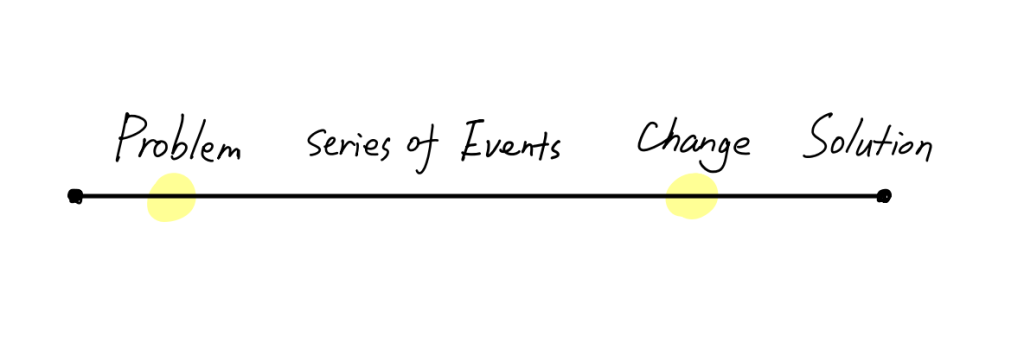
In Chinese Literature we call it “起承转合”, which means the introduction, the follow-up, the twist and the ending.
When the development of the story is combined with the state(or emotional arc) of the characters, a curve comes out. These rise and fall make up the story flow.
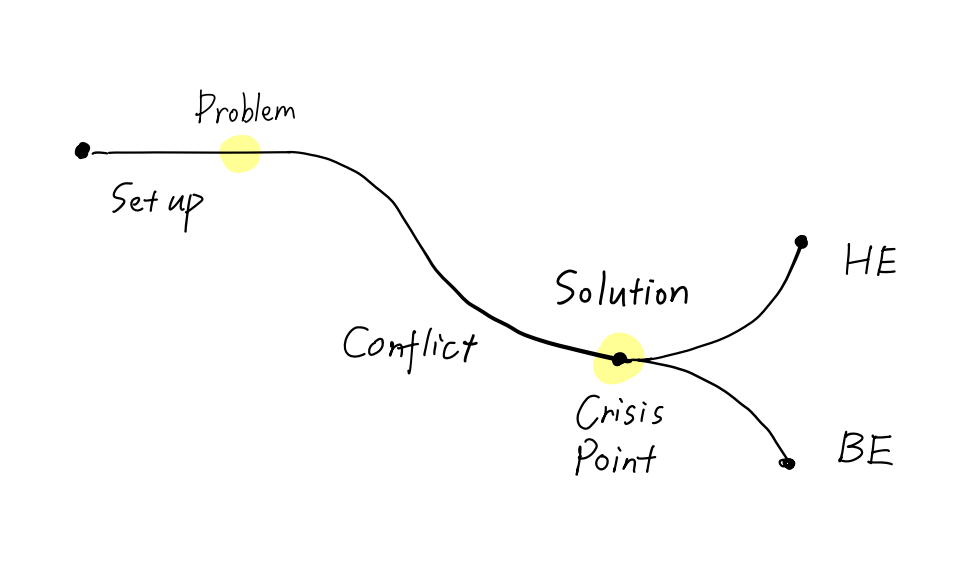
If it is a longer story, the curve will be longer and with more waves. Then we’ll get a classic three-act play.
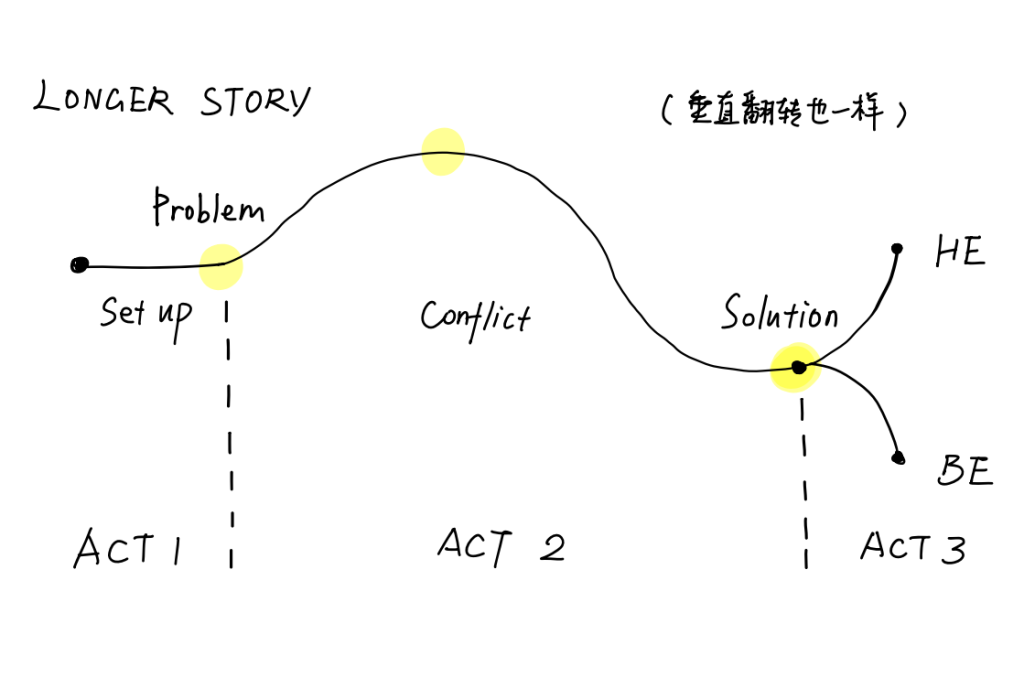
I analyzed the story bones of Psycho(1960), a Hitchcock film, along with the mood changes. The story set up with the theft of a huge sum of money (act 1), followed with the conflicts between the thief, the detectives and the murderer (act 2), and ending with the suspect being caught (act 3).
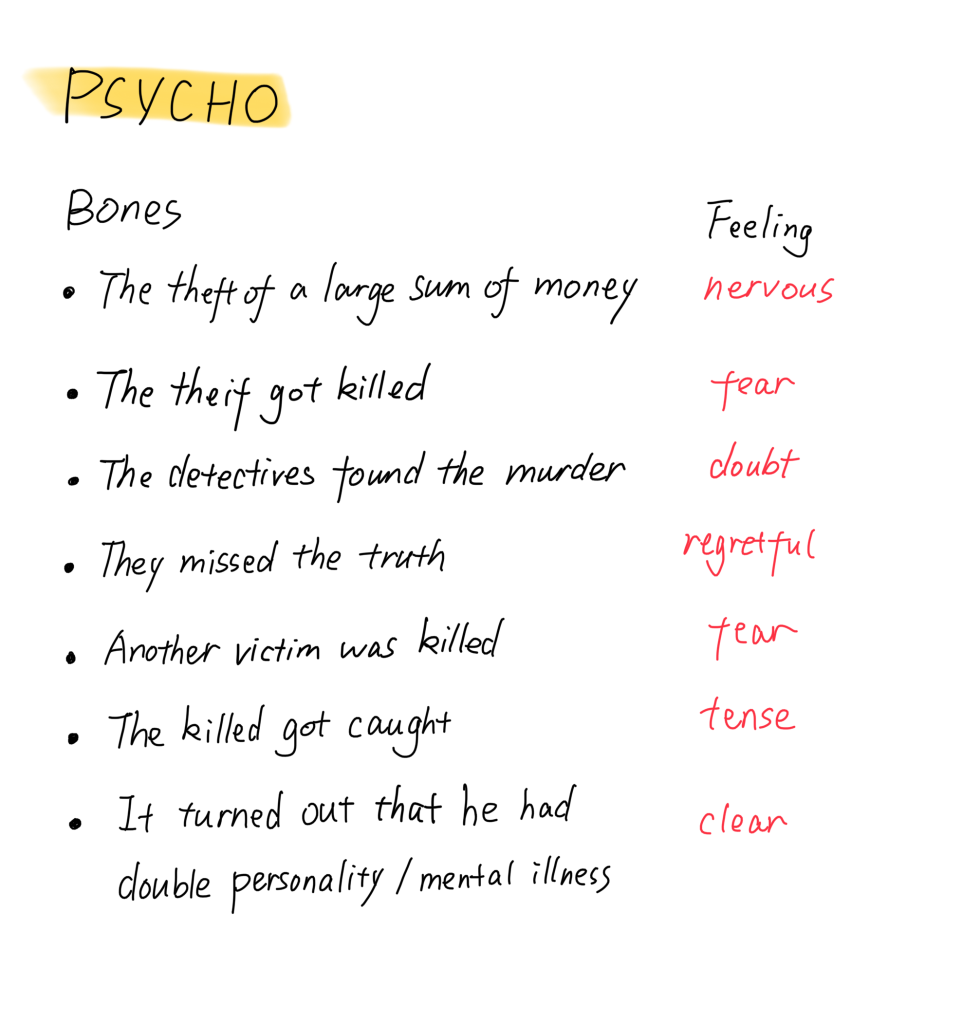
CHARACTER STORY
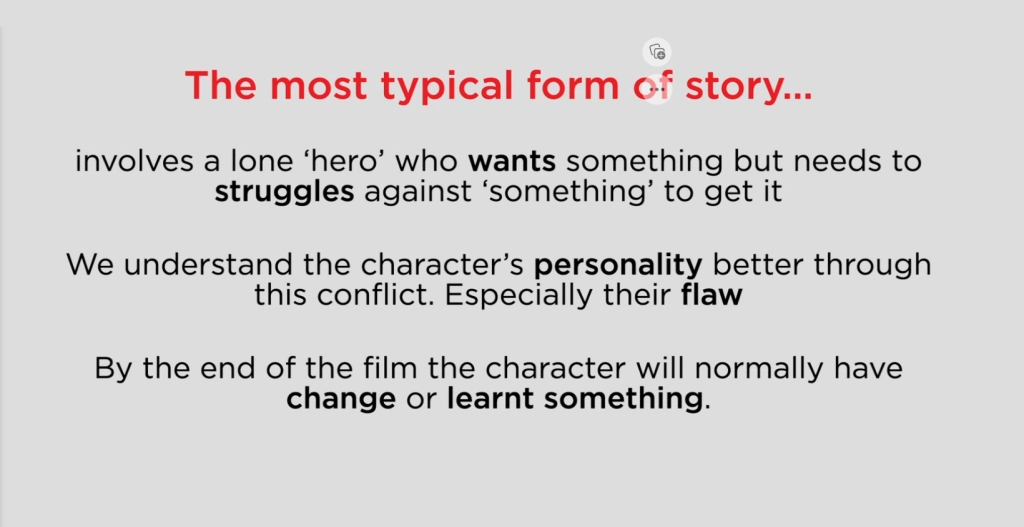
As the most informative part of the story, what makes up the conflict?
Character’s struggle:
- character vs character
- character vs environment (setting,community,situation)
- character vs self
When it comes to creating characters, one has to mention is the character archetypes.
Character Archetypes:
- THE HERO
- THE DEVIL
- MAIDEN
- KING/QUEEN
- CHILD
- SIDEKICKER
- TRICKSTER
- CRONE
- ……
The combination and relationship of multiple archetypes will give rise to new level of interests. The contrast between character’s outside and inside will also enrich the personality.
On class Somto and I made up a short story. The main character is a police of hero archetype and a boss combined with maiden and devil archetype. So it starts out looking like a love story of a hero saving a beauty but actually is a dark criminal story.
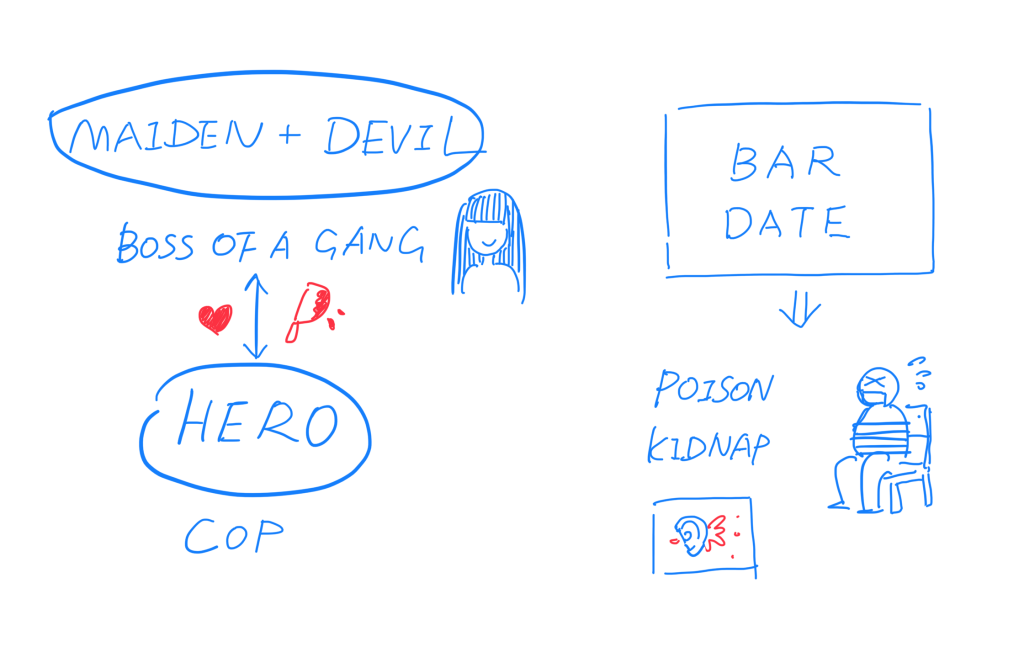
STORYBOARD
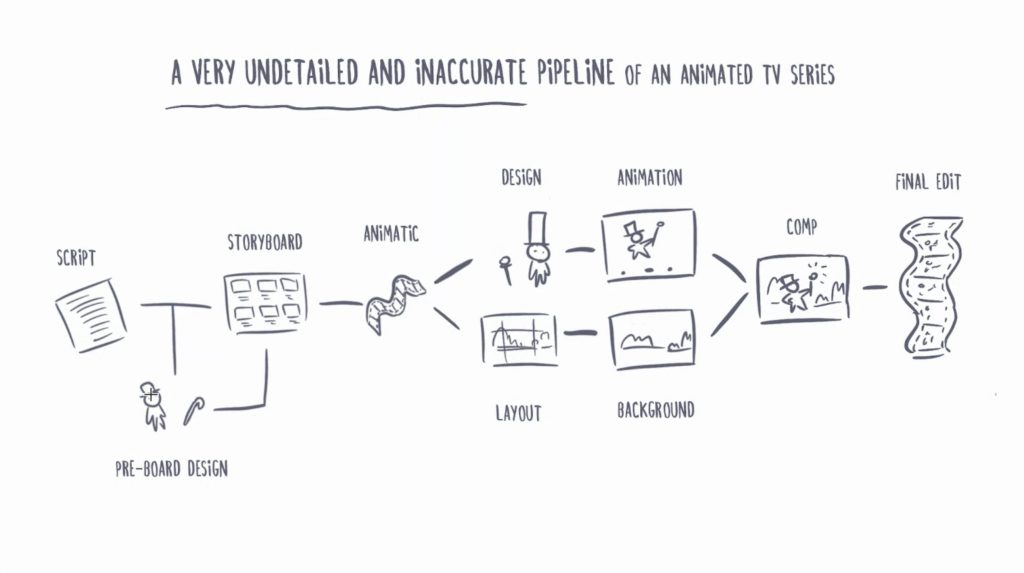
Storyboarding is the process of visualizing a written story. It’s the previous and general design for the film shots. Especially in teamwork, a storyboard artist needs to give simple but clear instructions and information for the next steps.
Notes for storyboarding:
- COMPOSITION
- CAMERA ANGLE
- CUTTING
- CONTINUETY
Camera View:
- establish shot — where & when
(depends on how often change the scene and space) - long/wide shot — who
- medium shot — what
- the close-up — details
Camera Angle:
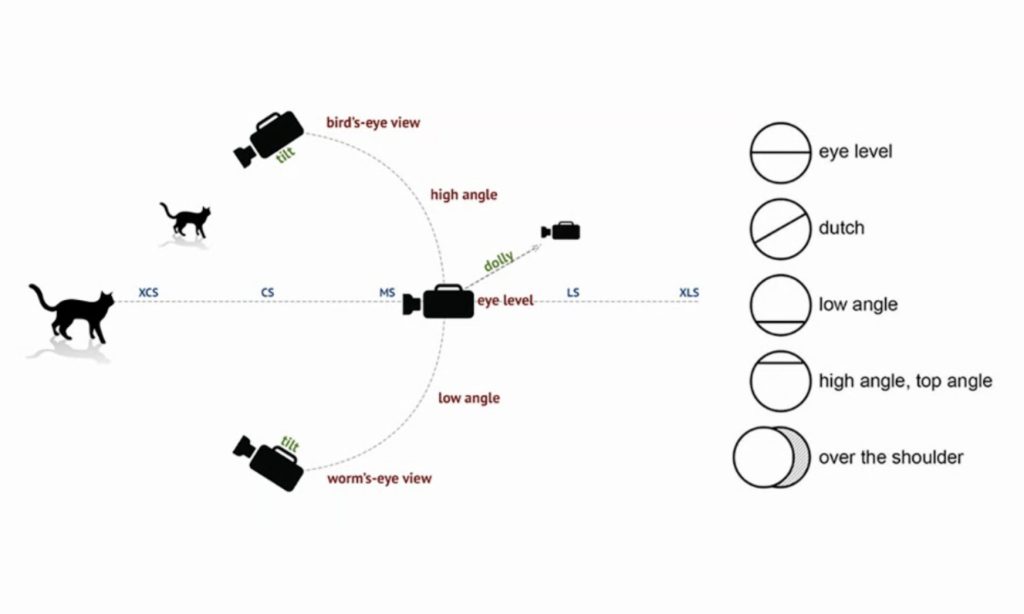
Cutting:
- standard cut
- audio overlap
- cutting on action
- cutaways
- cross-cut(parallel editing)
- match cuts
- montage
Here’s a part of storyboard from Frozen 2. It includes a series of space transfers (from indoors to outdoors) and mood changes(from annoyed to adventurous), and with instructions on lighting and atmosphere.
EXERCISE
